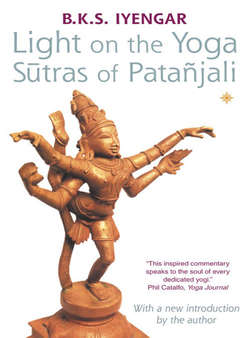Читать книгу Light on the Yoga Sutras of Patanjali - Литагент HarperCollins USD - Страница 62
I.4 vrtti sarupyam itaratra
Оглавление| vrtti | behaviour, fluctuation, modification, function, state of mind |
| sarupyam | identification, likeness, closeness, nearness |
| itaratra | at other times, elsewhere |
At other times, the seer identifies with the fluctuating consciousness.
When the seer identifies with consciousness or with the objects seen, he unites with them and forgets his grandeur.
The natural tendency of consciousness is to become involved with the object seen, draw the seer towards it, and move the seer to identify with it. Then the seer becomes engrossed in the object. This becomes the seed for diversification of the intelligence, and makes the seer forget his own radiant awareness.
When the soul does not radiate its own glory, it is a sign that the thinking faculty has manifested itself in place of the soul.
The imprint of objects is transmitted to citta through the senses of perception. Citta absorbs these sensory impressions and becomes coloured and modified by them. Objects act as provender for the grazing citta, which is attracted to them by its appetite. Citta projects itself, taking on the form of the objects in order to possess them. Thus it becomes enveloped by thoughts of the object, with the result that the soul is obscured. In this way, citta becomes murky and causes changes in behaviour and mood as it identifies itself with things seen. (See III.36.)
Although in reality citta is a formless entity, it can be helpful to visualize it in order to grasp its functions and limitations. Let us imagine it to be like an optical lens, containing no light of its own, but placed directly above a source of pure light, the soul. One face of the lens, facing inwards towards the light, remains clean. We are normally aware of this internal facet of citta only when it speaks to us with the voice of conscience.
In daily life, however, we are very much aware of the upper surface of the lens, facing outwards to the world and linked to it by the senses and mind. This surface serves both as a sense, and as a content of consciousness, along with ego and intelligence. Worked upon by the desires and fears of turbulent worldly life, it becomes cloudy, opaque, even dirty and scarred, and prevents the soul’s light from shining through it. Lacking inner illumination, it seeks all the more avidly the artificial lights of conditioned existence. The whole technique of yoga, its practice and restraint, is aimed at dissociating consciousness from its identification with the phenomenal world, at restraining the senses by which it is ensnared, and at cleansing and purifying the lens of citta, until it transmits wholly and only the light of the soul.
(See II.20; IV.22.)
